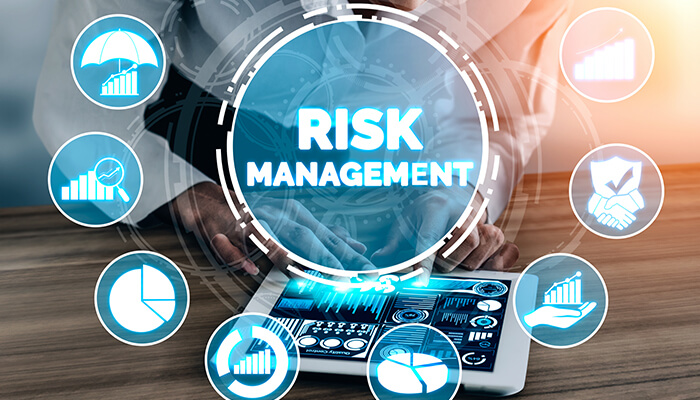A study on risk management trends revealed that only 30% of projects are delivered on budget while only 15% are delivered on time. In the same study, researchers established that 92% of CEOs in the survey agreed that having risk information is crucial for long-term success. Nonetheless, only 23% are confident that they have comprehensive insights about the risks associated with their business. Risk management is about awareness of the threats that may come in the way of achieving your business strategy. It helps in risk avoidance and risk reduction for the overall success of any organization.
What Is Strategic Risk Management?
Strategic risk management refers to identifying risks, establishing their causes and effects, and then creating an appropriate response to mitigate them. Every organization faces some level of risk, whether they know it or not. If not well informed of these risks, an organization can find it difficult to accomplish its business goals or even survive the market. It is, therefore, a considerable responsibility of the management to develop efficient and effective measures to identify and better manage risks.
How to Measure and Manage Strategic Risk?
To become effective at managing risks, you first have to measure them. The key is to measure risks with the same standards you use to measure results. With this concept, it is much easier to calculate the inherent risk your business strategy faces. Organizations can use two key metrics to measure strategic risk:
- Economic Capital: This is the cost it will take to cover losses associated with a predetermined solvency standard. The standard is obtained from the organization’s target debt rating. Any risk can be quantified using the currency of economic capital.
- Risk-adjusted return on capital (RAROC): This is a measure of return on investment (ROI) that takes into account elements of risks. When a project faces great risks, you must evaluate it differently. RAROC considers the investment profile changes by discounting risky cash flows against less-risky cash flows. If it is determined that the RAROC is more than the cost of capital, then the initiative is viable to your organization and will add value.
Five Steps to Create an Effective Strategic Risk Management Process
1. Define your business strategy and objectives and set the key performance indicators (KPIs) to measure results
Before diving deep into the risks, capturing your overall business strategy and objectives is good. This is best done by the board of directors and should be very specific and, possibly, quantifiable. Different organizations use different approaches to plan out their strategies. It could be a simple SWOT analysis or a more detailed and balanced scorecard. However, one thing familiar with these two approaches is their failure to address risk, and organizations need to take extra steps to include risk in this planning phase.
While you are still defining your business strategy, establish key performance indicators that will help your organization measure and track results. Your KPIs will provide the roadmap for future progress, whether or not you were successful at attaining them.
2. Identify risks that may hinder you from achieving your KPIs.
Now that you know what you are working towards, it is time to identify which risks may come in the way of you hitting your KPIs. The factors threatening your success can be internal or external. To ensure effective risk management, you must comprehensively identify all your significant risks. When identifying risks, you need to pay attention to the following:
- Determine what could happen and where and when it may occur. This gives context to your identified risks and how they interfere with your business objectives.
- Identify why and how the risk could occur. This means brainstorming all the possible causes and consequences of each risk.
A more insightful approach for identifying risks involves breaking down your business strategy into assumptions and testing each assumption for its susceptibility to risk. Also, note that identifying and assessing risks is not supposed to be a one-time process. As your organization evolves and the business environment shifts, you must review your risks and make necessary updates. This will therefore be an ongoing process that should involve all stakeholders to get a broad perspective.
3. Prioritize risks based on business objectives
After you have identified and analyzed your business’s risks, the next step should be establishing the risk level by organizing risks into a risk matrix. Doing this helps you prioritize the risks based on their severity and impact on your business strategies and objectives. Risk levels can be tolerable, low, medium, high, and intolerable. To determine the priority of risks facing your organization, you will need to consider factors such as risk appetite, risk sensitivity, risk severity, risk manageability, and resource availability.
For example, if you prioritize risks based on attitude, your focus will be on risk appetite, tolerance, and threshold. If your organization has a high-risk appetite but low-risk tolerance, you prioritize risk response based on the anticipated level of risk impact rather than on the level of uncertainty of the risk event occurring.
4. Respond to the risk conditions
After identifying risks and assessing them to determine impact, you need to figure out your risk response plan. There should be a consistent and unified voice throughout your organization on what actions need to be taken to mitigate risks. Naturally, the highest risks need to be addressed first.
Your response strategy must include an action plan on who needs to do what is trying to mitigate risk. It should also specify what risks require immediate response, which can wait, and which can be ignored altogether. Additionally, when choosing a mitigation measure, also conduct a cost-benefit analysis. Other things to consider include:
- Steering away from the activity that caused the risk
- Working to reduce the effects of the risks to a tolerable level
- Sharing or transferring the risk to a third-party
- Accept the risk rating instead of fighting against it, especially when the cost implication outweighs the benefits of the treatment.
5. Monitor results and adjust accordingly
There is no end to risk management. It is an ongoing process that requires constant monitoring and review. Record results of you’re the strategies and measures you have established and report them both internally and externally. Monitoring will help you note any changes in the status of risks your organization is facing and also help identify new risks or control breaches.
Remember that strategic risk management will help you identify the most significant threats and opportunities to your goals and objectives. Taking charge of risk management in your company can shape future success through risk reduction and risk avoidance.



